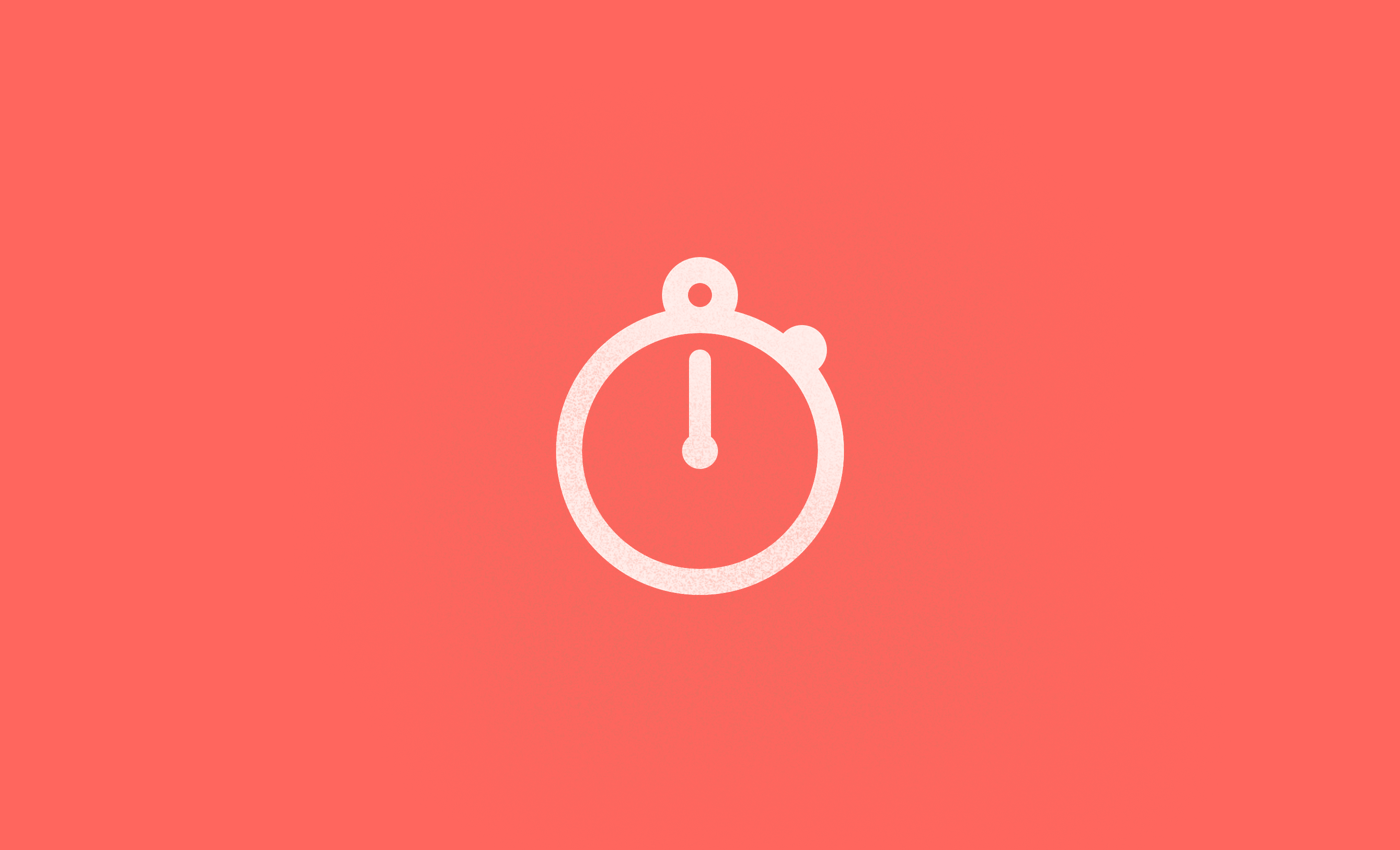Working in sessions – why it matters and how it works
ProductivityOur mind is not made to focus for 8 hours straight.
Research has shown that the natural attention span of adults for a task that requires focused attention lies around 20 minutes. We are able to refocus on the same task, but we can’t focus for very long stretches of time until our brain naturally seeks a break in order to recharge.

Trying to focus for long stretches of time without taking frequent breaks can lead to mental fatigue and overall burnout. Our mind is like a muscle that becomes fatigued after prolonged use, hence breaks are fundamental.
Research has found that in order to perform cognitive tasks and to be able to focus, we need to have unfocused times. Basically, times for focus and unfocus go hand in hand and are vital for our brain to function properly.
So, as we can’t focus for long periods of time and naturally seek out breaks in order to recharge and properly function, dividing your workday in smaller chunks of focused time with frequent breaks in between, aka “working in sessions”, seems to be the most natural and effective way of working. It’s also one of the easiest productivity and time management methods there is, as it requires no special tool and is suitable for almost any type of work.
What to be aware of
Since working in sessions requires you to focus, you need to be aware that your biggest enemy is therefore any form of distraction. There are essentially two forms of distractions: external and internal.
External Distractions
External distractions are things like notifications, phone calls, chatty co-workers or anything coming from the environment around you that could potentially interrupt you.
Research has found that, once interrupted, it takes us up to 25 minutes to fully refocus again, and considering the constant prompts and nudges we’re faced with, it’s no wonder our attention is constantly pulled from one thing to another.
Before starting any task, make sure your environment is set up for your success: switch off all notifications, put your phone facing down or in airplane mode, and communicate to your co-workers that for a set amount of time you will be unavailable, so you know that you won’t be distracted.
Internal Distractions
On the other hand, internal distractions come from your mind. If un-trained, your mind wanders around a lot: about 46% of your awake time!
Mind-wandering is the act of shifting your focus from the task at hand, or what is happening around you, to self generated thoughts and feelings. This means that half of the time we’re paying attention to what we’re doing, while the other half our mind is somewhere else. So, even if you try to focus for those 20 minutes at a time, your mind might still try to interfere. More so if you’re bored and not engaged with the task at hand.
The good news is that, just like with body and physical exercise, you can train your mind to stay focused.
One way of achieving this is by practicing meditation, while another way is to simply work in sessions. Both meditation and working in sessions are very similar, as both are trying to train your mind to stay focused while ignoring everything else, and allowing nothing to break that focus.
How to incorporate it
With this in mind, how can you incorporate working in sessions into your day to day routine? Well, you need to start thinking about your day, how it is structured and how you can avoid possible distractions.
Asynchronous communication
One thing that you can do is to adopt the mindset of asynchronous communication. This means that you don’t give attention to others whenever they want something from you, but instead you give them attention and communicate with them intentionally, meaning when you decide and when you are ready to communicate back. This means that you, and whoever you work with, is not required to always be alert, always ready to jump on every notification and to answer emails right away as they come in. Instead, asynchronous communication allows you and others to calmly focus on whatever you are doing, without others expecting you to respond immediately.
Batch similar tasks together
Another great way to structure your day is to batch similar tasks together.
If you have to have several meetings or phone calls over the week, try to schedule them all for one day, so you keep the rest of the week free for other things. It’s hard to try to focus on something knowing that in half an hour you need to be ready for this meeting or that phone call. Jumping in and out of meetings and calls will make it difficult to get long stretches of uninterrupted focus time, therefore it makes sense to batch those tasks together as much as possible or have an entire day dedicated to those tasks.
Set specific time blocks for deep work
Similar to batching distracting tasks together, you need to try to make as much room and time as possible for uninterrupted work time. Without intentionally making room for uninterrupted work time, you risk that your day is run and dictated by others.
Look at your week and see where you can block out long stretches of time, best if this is when you know you are the most productive. Maybe you can block out a whole day dedicated to a certain project or, if that is not possible, try to schedule as many time blocks as possible throughout your week.
By having those time blocks set in the calendar and communicating to others that this is a time where you will not be available, you minimize the risk of external distractions and your mind will be free to focus on the task at hand.
How it actually works
Now that you’ve set aside some time to really focus and deep dive into a task, how does working in sessions exactly work?
The goal of this method is to get you as quickly as possible into the zone and achieve a state of flow, where you can fully focus on whatever you want to do without getting distracted.
What is flow?
Flow is the mental state in which a person performing an activity is fully immersed in a feeling of energized focus, full involvement, and enjoyment (aka “the zone”).
Remember those times where you got so concentrated that you forgot everything around you? This is exactly what this method is trying to teach you: getting as quickly and as often as possible into the zone.
The hardest part is often to simply get started. That is why a timer is such a powerful tool, as it initiates that “starting” for you. Once pressed, it simply starts the countdown and encourages you to just start and go with it.
- So, pick a task you need to do or a project you want to work on and set the timer for 25 minutes (25 minutes is only the default time and you can change it to whatever time you feel comfortable with). If you feel like you’re really struggling with the task or have a hard time to focus, then start with a shorter length such as 10 minutes.
Once the timer has started, the next 25 minutes (or whatever minutes you have set the timer to) should be fully devoted to the task and nothing should distract you. Hardcore fans of this method restart a work session from scratch if they let themselves get distracted, but it’s up to you how you want to handle this. - After the time is up you can take a short break, which is usually 5 minutes. Once the short break is over, you simply start another work session and so on.
- After 4 completed work sessions (4 is the standard value and can be changed to what best suits you) you should take a longer break (usually 15 minutes, but really up to you). Once the long break is over you can start another sequence.
The goal is to complete as many sessions as possible throughout your day.
Takeaway
The beauty of this method is that it is highly customizable, and as you progress and see what works best for you, you can change the values and adapt them as you go.
With our timer you can then get an overview of your daily completed sessions and see how you did over time.
If you then use our timer together with our sounds, you will have a powerful combination, as they both function as a mental cue to help you get as quickly as possible into the zone. Moreover, the sounds will also help to mask outside distractions so to help you stay concentrated.
To get started, make sure to check out our extensive guide to our timer so you can learn how to use it in the most efficient way.



